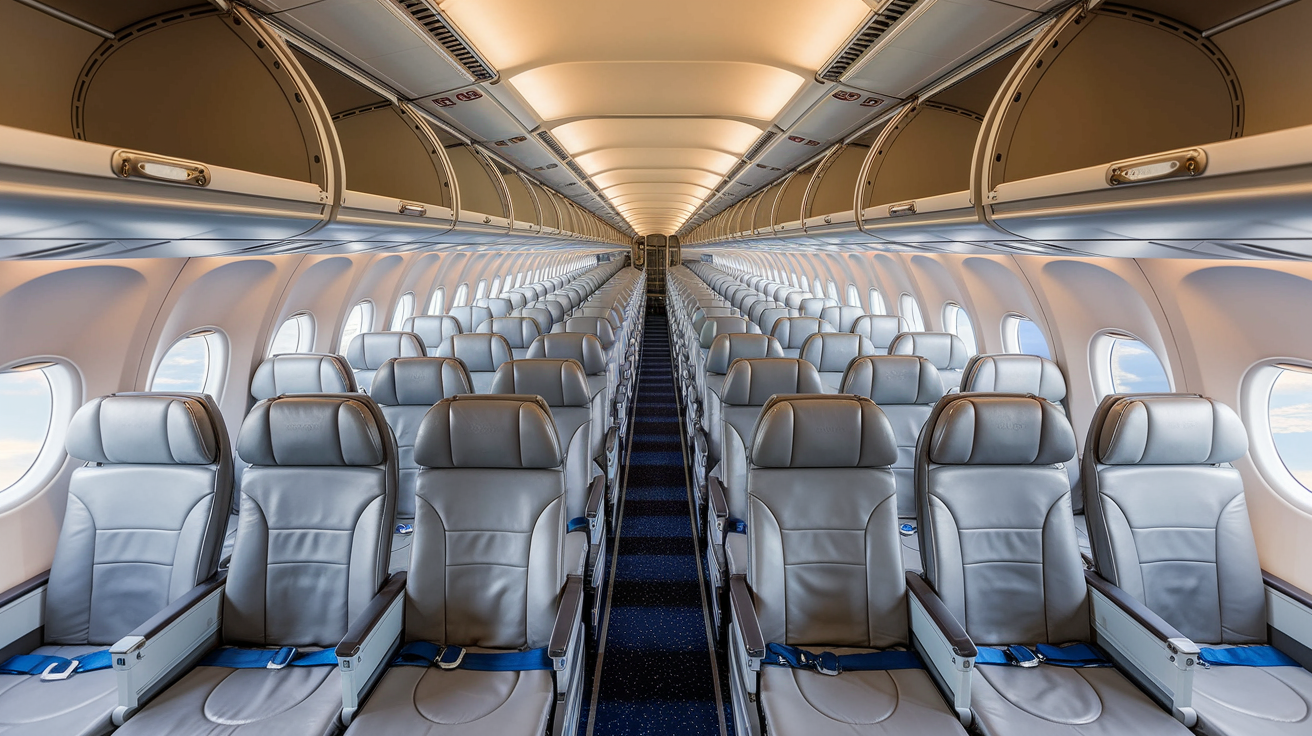The aviation industry is undergoing a significant transformation, driven in large part by advancements in aircraft seating design. With an increasing focus on passenger comfort, safety, fuel efficiency, and sustainability, innovative seating solutions are playing a crucial role in shaping the future of air travel. These innovations are not only enhancing the flying experience but are also contributing to the growth of the aircraft seating market, which is projected to grow from USD 8.9 billion in 2024 to USD 11.2 billion by 2029, at a CAGR of 4.8%.
Download PDF Brochure @
https://www.marketsandmarkets.com/pdfdownloadNew.asp?id=906
1. Lightweight Materials and Fuel Efficiency
One of the most impactful trends in aircraft seating design is the integration of lightweight materials, such as carbon fiber composites and thermoplastics. These materials are being increasingly adopted to reduce the weight of aircraft, which directly improves fuel efficiency. As airlines strive to lower operational costs and meet stringent emission regulations, the demand for seating that contributes to overall weight reduction is driving growth in the market.
Lighter seats mean less fuel consumption, allowing airlines to increase profit margins while complying with environmental standards. This trend aligns with the broader industry push for sustainable aviation and carbon-neutral goals by 2050.
2. Enhanced Ergonomics and Passenger Comfort
In the age of longer flights and growing competition among airlines, passenger comfort has become a top priority. The integration of ergonomically designed seats is a key factor in improving the overall passenger experience. Seats are now designed using biomechanical research to optimize comfort, reduce fatigue, and ensure proper posture for passengers during long flights.
These innovations are not limited to economy class. Business and first-class seating are seeing the incorporation of luxury features, including convertible lie-flat beds, adjustable lumbar support, and massage functions. Such seating designs not only improve comfort but also allow airlines to offer premium experiences that justify higher ticket prices, further boosting their profitability.
3. Smart Seating Technologies
Another major driver of market growth is the introduction of smart technologies into aircraft seating. The development of IoT-enabled seats allows airlines to offer personalized passenger experiences. These smart seats come equipped with features such as:
- Adjustable seating positions
- Climate control
- Interactive entertainment systems
- Built-in sensors for health monitoring
For example, electronic positioning systems allow passengers to customize their seating to individual preferences, while temperature regulation can be controlled for each seat to enhance comfort. Additionally, health-monitoring features like sensors to track passenger vitals and posture encourage healthier seating habits and reduce the risk of physical discomfort during long flights.
These innovations are not only beneficial for passengers but also for airline operators. Smart seating systems can provide real-time data on seat usage, maintenance needs, and wear-and-tear levels, allowing for predictive maintenance and improved lifecycle management of seats, thereby reducing downtime and maintenance costs.
4. Modular and Transformable Seating Solutions
The demand for flexibility in seating configurations has led to the rise of modular seating designs. Airlines are looking for solutions that allow quick reconfiguration of aircraft interiors to meet varying passenger loads and different flight purposes. Modular seating allows for the transformation of seating arrangements based on demand, enabling airlines to maximize cabin space and adjust for different passenger classes or cargo requirements.
This is especially important in emerging segments like Urban Air Mobility (UAM) and business jets, where space efficiency is crucial. In these segments, seating designs are focused on lightweight, transformable options that provide flexibility in terms of seating layouts, contributing to increased aircraft utilization and revenue potential.
5. Sustainability and Eco-Friendly Materials
Sustainability is becoming a critical consideration in the aviation industry, and aircraft seating design is no exception. There is a growing demand for eco-friendly materials in seating, such as recycled polymers, biodegradable fabrics, and antimicrobial coatings. These materials not only reduce the environmental impact of seat production but also improve passenger health and safety by minimizing exposure to toxic substances.
In regions like Europe, where strict environmental regulations and sustainability standards are enforced, the push for green aviation solutions is driving the adoption of these materials. The incorporation of sustainable seating options is also seen as a competitive advantage for airlines, catering to environmentally conscious passengers and aligning with global sustainability goals.
6. Advancements in Pilot and Crew Seating
The pilot and crew seating segment is also seeing significant innovations. Enhanced ergonomic designs are being developed to ensure the comfort and well-being of flight crews during extended operations. Seats equipped with biomechanical modeling and electronic positioning systems allow for automated adjustments, promoting better posture and reducing fatigue.
Moreover, health-monitoring sensors integrated into crew seats help track the well-being of pilots and crew members, facilitating proactive health management and ensuring safe operation of the aircraft over long distances.
Innovation as a Catalyst for Growth
The continuous evolution of aircraft seating design is playing a pivotal role in the growth of the aviation industry. From lightweight materials that boost fuel efficiency to smart technologies that enhance passenger comfort and operational efficiency, innovations in seating design are addressing the evolving needs of airlines and passengers alike. As airlines seek to improve the flying experience, reduce costs, and meet sustainability goals, the demand for advanced seating solutions will continue to drive the expansion of the aircraft seating market through 2029 and beyond.
Ask for Sample Report @
https://www.marketsandmarkets.com/requestsampleNew.asp?id=906
Key Market Players
With leading industry players such as Raytheon Technologies Corporation, RECARO Aircraft Seating, and Safran at the forefront, the future of aircraft seating promises even more breakthroughs that will revolutionize the passenger experience and fuel further growth in the aviation sector.

